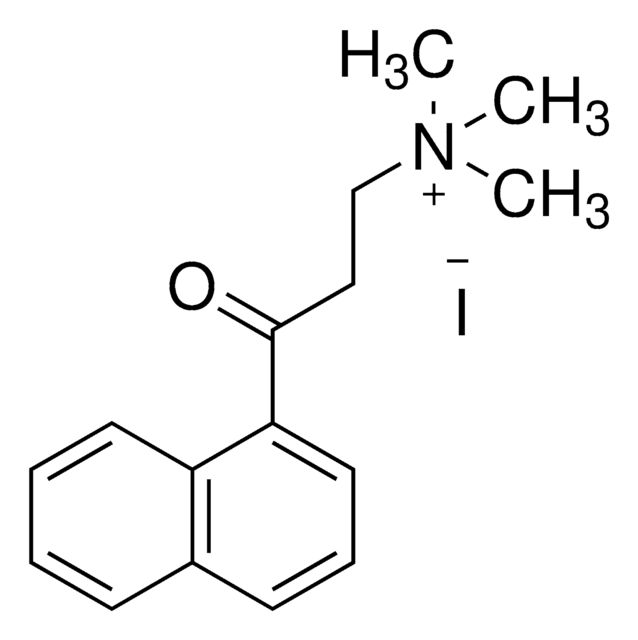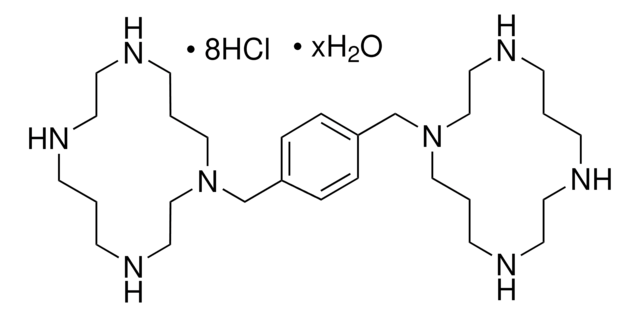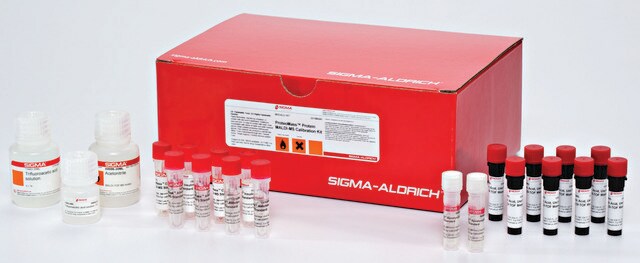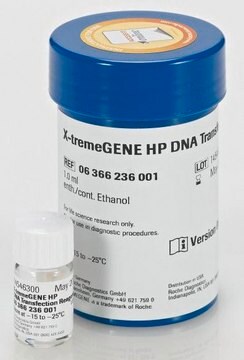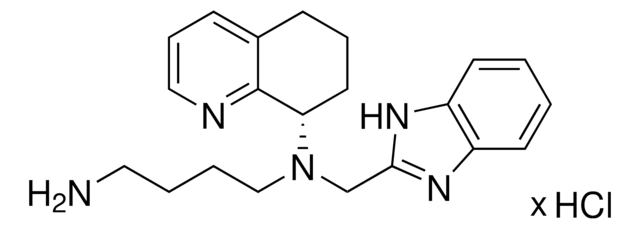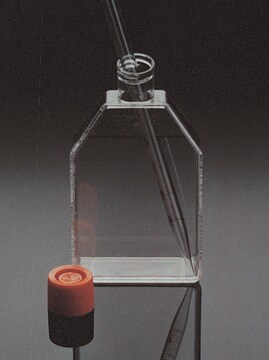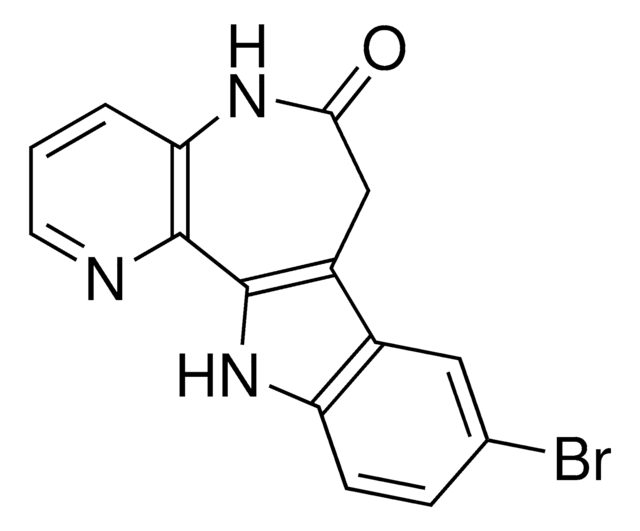239820
AMD3100 octahydrochloride hydrate
≥98% (HPLC), solid, CXCR4 antagonist, Calbiochem
Synonyme(s) :
CXCR4 Antagonist I, AMD3100, 1,1ʹ-(1,4-Phenylene bis(methylene))- bis-1,4,8,11-tetraazacyclotetradecane, 8HCl, JM3100, 1,1ʹ-(1,4-Phenylenebis(methylene))-bis-1,4,8,11-tetraazacyclotetradecane, 8HCl, JM3100
About This Item
Produits recommandés
Nom du produit
CXCR4 Antagonist I, AMD3100, The CXCR4 Antagonist I, AMD3100, also referenced under CAS 155148-31-5, controls the biological activity of CXCR4. This small molecule/inhibitor is primarily used for Cell Signaling applications.
Niveau de qualité
Essai
≥98% (HPLC)
Forme
solid
Fabricant/nom de marque
Calbiochem®
Conditions de stockage
OK to freeze
desiccated (hygroscopic)
protect from light
Couleur
off-white
Solubilité
water: 10 mg/mL
Conditions d'expédition
ambient
Température de stockage
2-8°C
InChI
1S/C28H54N8.8ClH/c1-9-29-15-17-31-13-3-21-35(23-19-33-11-1)25-27-5-7-28(8-6-27)26-36-22-4-14-32-18-16-30-10-2-12-34-20-24-36;;;;;;;;/h5-8,29-34H,1-4,9-26H2;8*1H
Clé InChI
UEUPDYPUTTUXLJ-UHFFFAOYSA-N
Description générale
Conditionnement
Avertissement
Reconstitution
Autres remarques
Pitchford, S.C., et al. 2009. Cell Stem Cell4, 62.
De Clercq, E. 2009. Biochem. Pharmacol. , 1655.
Thoma, G., et al. 2008. J. Med. Chem.51, 7915.
De Clercq, E. 2000. Mol. Pharmacol.57, 833.
Informations légales
Code de la classe de stockage
11 - Combustible Solids
Classe de danger pour l'eau (WGK)
WGK 3
Point d'éclair (°F)
Not applicable
Point d'éclair (°C)
Not applicable
Certificats d'analyse (COA)
Recherchez un Certificats d'analyse (COA) en saisissant le numéro de lot du produit. Les numéros de lot figurent sur l'étiquette du produit après les mots "Lot" ou "Batch".
Déjà en possession de ce produit ?
Retrouvez la documentation relative aux produits que vous avez récemment achetés dans la Bibliothèque de documents.
Notre équipe de scientifiques dispose d'une expérience dans tous les secteurs de la recherche, notamment en sciences de la vie, science des matériaux, synthèse chimique, chromatographie, analyse et dans de nombreux autres domaines..
Contacter notre Service technique